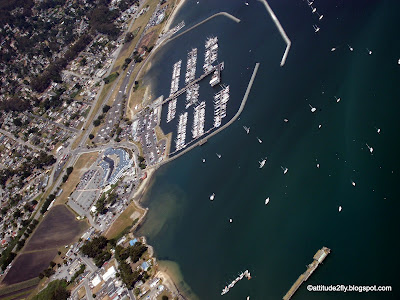Communication is very critical while flying but your responsibility increases when you are in the vicinity of Class B or C airspace in US. Let me put some do's and don't about communicating with controller in these airspace.
Read about the airspaces here.
Class B:
- Typically large airports (in terms of traffic) are classified as Class B (bravo) e.g. San Francisco, Los Angeles, Washington etc.
- Shape of class B appears as upside down wedding cake. Refer the image below.
 |
| Credit - Wikipedia |
- Requirements to fly in Class B are list here: Requirements (pilot certification, equipment etc.)
- Communication procedure - You have to be cleared to enter into Class B before you enter the airspace. Most likely you would have to speak with an area controller before you can enter the airspace and may not be directly with the ATC tower of that airport. You should communicate atleast 10 nm in advance. Sample communication with Class B controller
Aircraft Calling: Norcal, Cessna 1234MA at 3500ft over livermore airport, would like to transition through Class B for a bay tour. - Using the standard phraseology of who,where & what. Assuming you are flying through a class C.
Norcal: Aircraft calling standby. -- This means that they have just acknowledged your presence but no permission has been granted yet. KEEP OUT OF AIRSPACE, may have to circle around.
Norcal: Aircraft calling, say your request.
Aircraft Calling: Norcal, Cessna 1234MA at 3500ft over livermore airport, would like to transition through Class B for a bay tour. - Repeat your request.
Norcal: Cessna 1234MA, CLEARED INTO CLASS B, maintain 3000ft, squawk 1510. -- one marked in red is the golden tagline or "magic word" you need to hear from the controller. Without which you are not supposed to enter that airspace. If you do, its a violation and you may end up loosing your license.
Norcal (Alternate): Cessna 1234MA, remain clear of class B airspace -- STAY OUT of airspace.
Important points:
- Even if ATC does not use the exact words (may use it differently or forget about it), its your duty to confirm that as its your license which is in line of fire. Ask ATC.
- If ATC gives a vector (e.g. turn right heading 130) which may result in a flight path into class B, its your responsibility to be aware of it and ask ATC if you are cleared into Class B. Better ask then be sorry.
Class C:
- Typically medium size airports (in terms of traffic) are classified as Class C (Charlie) e.g. San Jose etc.
- Shape of class C is cylindrical with an outer shell.
- Requirements to fly in Class C are list here: Requirements (pilot certification, equipment - transponder, comm etc).
- Communication procedure - You have to establish 2 way radio communication to enter into Class C before you enter the airspace. Most likely you would have to speak with an area controller before you can enter the airspace and may not be directly with the ATC tower of that airport. You should communicate atleast 10 nm in advance. Sample communication with Class C controller
Aircraft Calling: Norcal, Cessna 1234MA at 3500ft over livermore airport, would like to transition through Class C for a bay tour. - Using the standard phraseology of who,where & what. Assuming you are flying through a class C.
Norcal: Aircraft calling standby. -- This means that they have just acknowledged your presence but no permission has been granted yet. KEEP OUT OF AIRSPACE, may have to circle around.
Norcal: Aircraft calling, say your request.
Aircraft Calling: Norcal, Cessna 1234MA at 3500ft over livermore airport, would like to transition through Class C for a bay tour. - Repeat your request.
Norcal: Cessna 1234MA, CLEARED INTO CLASS C, maintain 3000ft, squawk 1510.
Norcal (Alternate communication): Cessna 1234MA, standby - If the controller speaks up your aircraft tail number then also you are cleared into the airspace as that is establishing a 2 way radio communication.
Important points:
- If ATC gives a vector (e.g. turn right heading 130) which may result in a flight path into class C, its your responsibility to be aware of it and ask ATC if you are cleared into Class C. Better ask then be sorry.











































